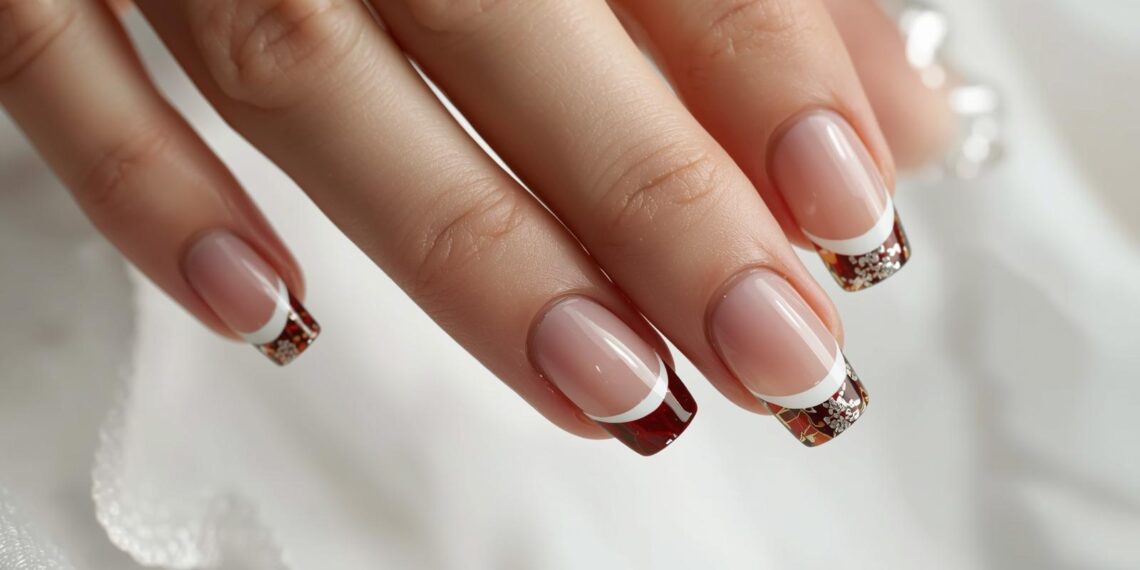French tip nails have long been a staple in the world of nail art, celebrated for their classic elegance and understated sophistication. However, as consumer preferences evolve and the beauty industry continues to innovate, creative variations on this timeless style have emerged, offering a fresh take on a beloved classic. This article explores the contemporary landscape of French tip nails, highlighting the latest designs and trends that are capturing the imagination of nail art enthusiasts worldwide.
Traditionally, French tip nails are characterized by a natural-looking base with white tips, mimicking the natural nail and offering a clean and polished appearance. This minimalist design has been a favorite for its versatility, easily transitioning from day to night and complementing any outfit. However, as nail art has grown in popularity, so too have the variations on this classic design, reflecting the broader shifts in wellness and beauty trends.
One of the most significant trends in modern French tip nails is the incorporation of color and texture. Nail artists are moving beyond the traditional white tip, experimenting with vibrant hues, glitter, and even metallic finishes. This shift not only reflects the growing desire for personalization in beauty routines but also aligns with the broader trend of expressing individuality through wellness practices.
For instance, black French tip nails have gained popularity as a bold and edgy alternative to the classic design. This variation provides a striking contrast against the natural nail and can be further enhanced with matte or glossy finishes for added dimension.
Geometric designs offer another creative twist on French tip nails, combining modern aesthetics with traditional elegance. By incorporating shapes such as triangles, squares, or chevrons, nail artists can create visually dynamic patterns that add interest and sophistication to the nails. This trend is particularly appealing to individuals seeking a more contemporary look, as it merges classic and modern elements seamlessly.
In recent years, minimalist and negative space designs have become increasingly popular in the realm of nail art. These styles emphasize simplicity and restraint, often leaving portions of the nail bare to create a striking contrast with the decorated tips. This approach aligns with the growing trend towards minimalism in wellness and lifestyle choices, where less is often more.
Negative space French tip nails offer a modern interpretation of the classic design, allowing for endless customization while maintaining an air of sophistication. By using clear polish or leaving parts of the nail unpainted, these designs create an illusion of depth and complexity without overwhelming the senses.
Nail art, including variations on French tip nails, holds cultural significance that extends beyond aesthetics. It serves as a form of self-expression and identity, allowing individuals to convey aspects of their personality and mood through their appearance. As such, the evolution of French tip nails can be seen as a reflection of broader societal changes, where individuals seek to assert their uniqueness and embrace new forms of beauty.
The rise of creative variations on French tip nails also highlights the intersection between wellness and beauty. As consumers become more mindful of their well-being, there is a growing emphasis on practices that promote self-care and self-expression. Nail art, as a form of personal grooming, plays a role in this wellness journey by offering a means of relaxation, creativity, and self-discovery.
For wellness product developers and lifestyle brands, understanding these trends is crucial for creating products that resonate with consumers. By aligning with the values and preferences of today’s beauty enthusiasts, brands can foster deeper connections with their audience and remain relevant in an ever-evolving market.
As we look to the future, it is clear that French tip nails will continue to evolve, driven by technological advancements and shifting consumer preferences. Emerging trends such as eco-friendly and sustainable nail products are likely to influence the designs and materials used in nail art, reflecting the broader movement towards environmental consciousness in the wellness industry.
Furthermore, the integration of digital technology, such as augmented reality (AR) nail try-ons and personalized nail art apps, could revolutionize the way individuals experiment with and select their nail designs. These innovations offer exciting opportunities for brands to engage with consumers in new and meaningful ways, enhancing the overall nail art experience.
In conclusion, the creative variations on French tip nails exemplify the dynamic nature of the beauty industry and its ability to adapt to changing cultural and consumer landscapes. As nail art continues to evolve, it serves as a powerful medium for self-expression and a reflection of broader wellness trends. Whether through bold colors, geometric patterns, or minimalist designs, French tip nails offer endless possibilities for those seeking to explore the intersections of beauty, identity, and well-being.
For industry professionals, staying attuned to these trends is essential for crafting products and strategies that resonate with consumers. By embracing innovation and understanding the cultural significance of nail art, brands can position themselves at the forefront of this vibrant and ever-changing landscape.




